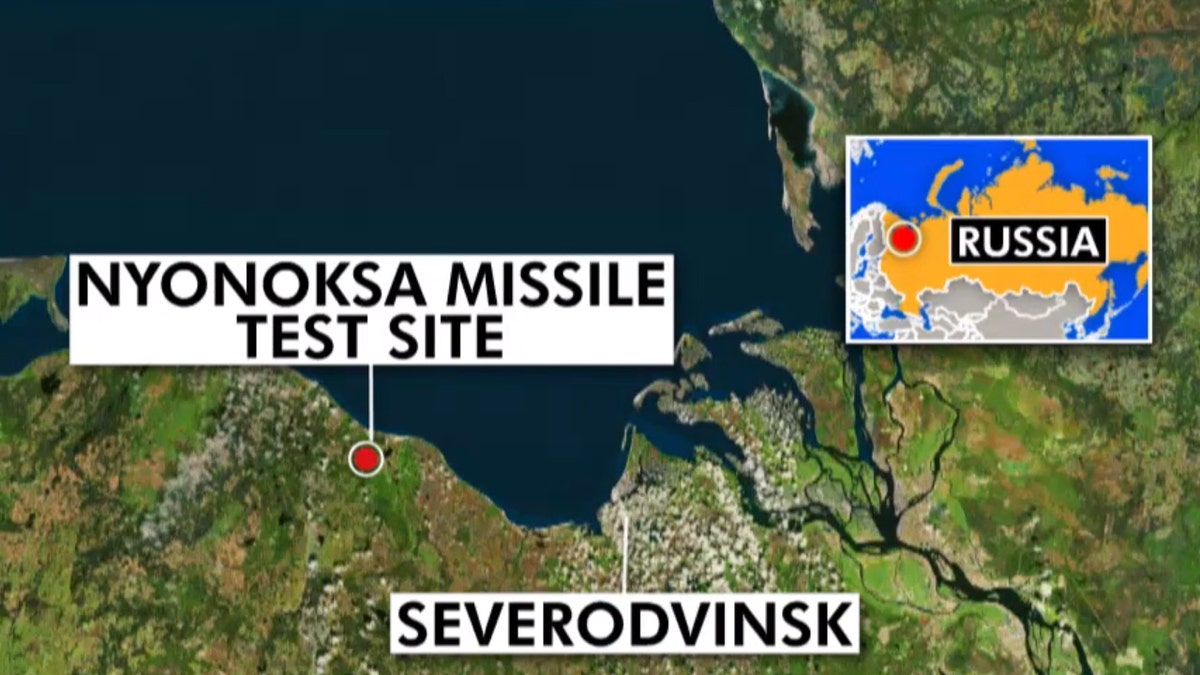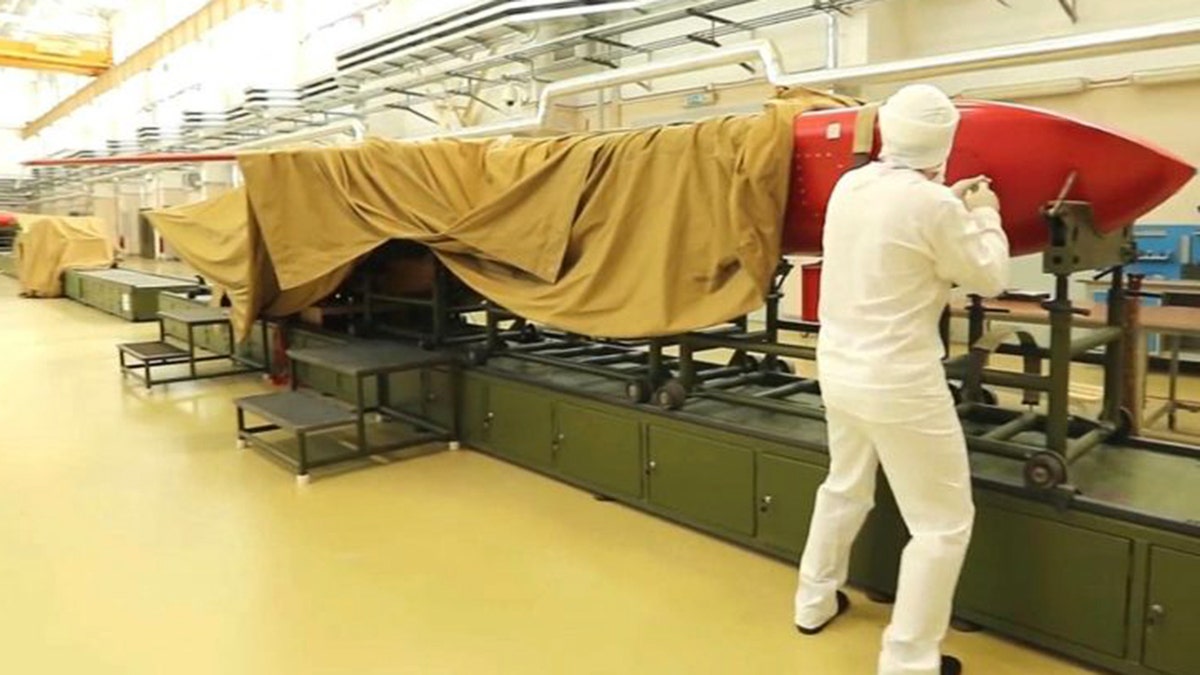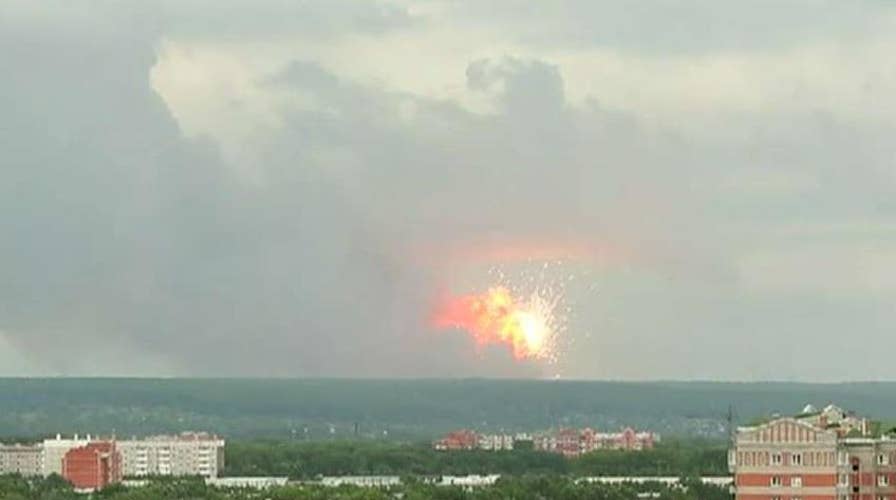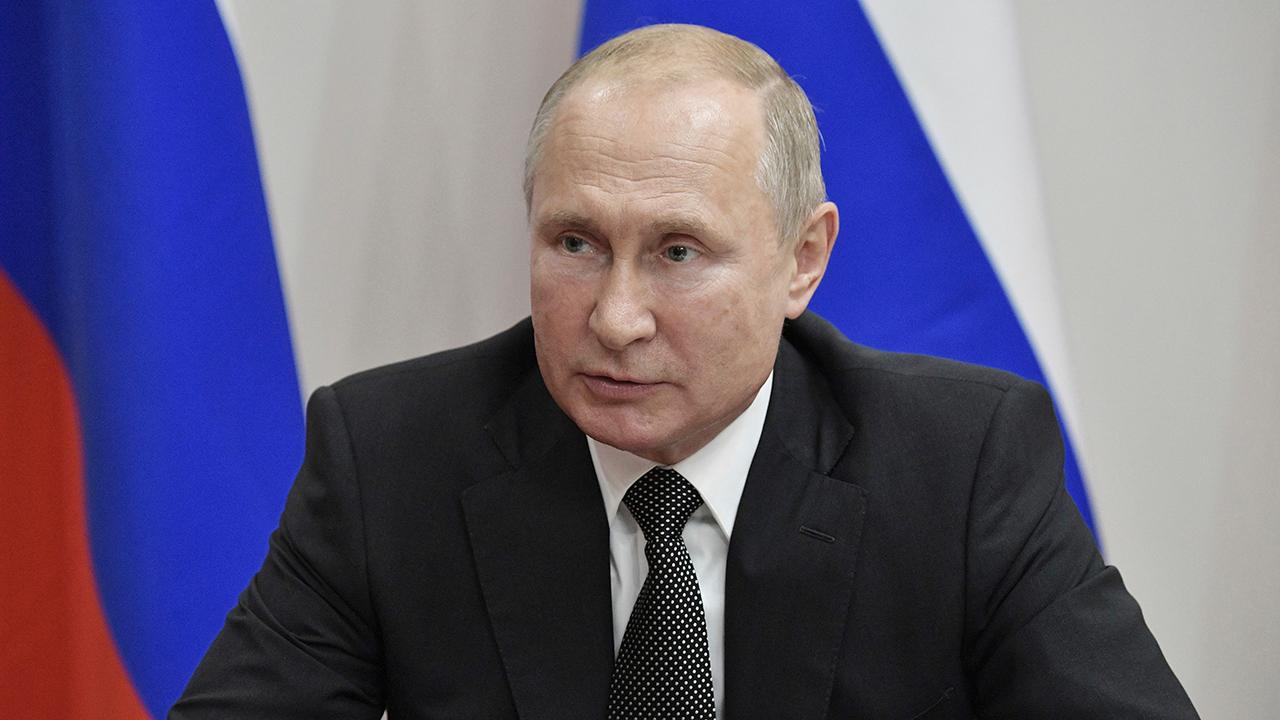Russia mysteriously cancels local evacuation order near site of deadly nuclear explosion
The Russian government is downplaying the deadly nuclear explosion suspected to be a failed missile test; Lucas Tomlinson reports.
A mysterious and deadly explosion earlier this month at a naval weapons testing range in northwestern Russia has spawned numerous questions amid changing and conflicting information from authorities, including from health workers who treated those injured in the blast who say they weren't informed about potential radiation risk.
The blast on Aug. 8 took place at a military shooting range in Nyonoksa, located in the far northern Arkhangelsk region.
Russia's Defense Ministry initially said the blast killed two people and injured six, but the state-controlled nuclear agency, Rosatom, later disclosed the explosion killed five of its workers and injured three others. More than a week after the explosion, it's still not clear what the final death toll is.
The Russian Defense Ministry initially said no radiation had been released, although the city administration in Severodvinsk -- a port city of 183,000 located about 12 miles away from the military testing range -- reported a brief rise in radiation levels. By Tuesday, Russia's state weather agency Rosgidromet said that radiation levels had spiked by four to 16 times in the city.
RUSSIA CANCELS EVACUATION AFTER MISSILE EXPLOSION, CLAIMS TESTS SHOW RADIATION LEVELS 'NORMAL'
Four male doctors and a medical worker at the Arkhangelsk Regional Clinical Hospital, located near Severodvinsk, told the Moscow Times the facility received three men to the hospital around 4:30 p.m. the day of the accident who were naked and wrapped in translucent plastic bags. Health care staff at the time were only told there had been an explosion hours earlier at a military site, the Moscow Times reported Friday.

Buildings at a military base in the town of Nyonoska, Russia, the site of an accident during a test of a nuclear-powered engine where at least 5 people were killed earlier this month. (AFP/Getty Images)
“No one -- neither hospital directors, nor Health Ministry officials, nor regional officials or the governor -- notified staff that the patients were radioactive,” one of the clinic’s surgeons told The Moscow Times. “The hospital workers had their suspicions, but nobody told them to protect themselves.”
All five men who spoke to the newspaper did not treat the patients, but attended a briefing on Aug. 12 at the hospital. The Moscow Times reported all who attended the briefing all gave an "identical" version of events and were frustrated with not being made aware of potential risks.
“The staff is furious to say the least,” one of the doctors told The Moscow Times. “This is a public hospital. We weren’t prepared for this and other people could have been affected.”
A nurse at the hospital who gave only her first name, Viktoria, out of concern she said might face retribution, told the New York Times that doctors who worked on those injured in the blast discovered their scrubs were causing radiation meters to click and were later evacuated to Moscow.
“They didn’t tell us anything,” Viktoria told the New York Times. “Then they told us, ‘we will wash the walls and then everything will be all right.’”
RADIATION LEVELS AT RUSSIAN TEST SITE SPIKED UP TO 16 TIMES ABOVE NORMAL AFTER EXPLOSION
Days after the blast, Russia's TASS news agency reported the medics who treated victims of the explosion have been ordered back to Moscow for a medical examination. The medics have signed non-disclosure agreements about the nature of the accident, TASS said at the time.

Russia's state weather agency, Rosgidromet, said on Tuesday that it believed radiation levels had risen by four to 16 times in the nearby port city of Severodvinsk after the accident (Bing/Fox News)
Three of the doctors who spoke to the Moscow Times said one of the doctors flown to Moscow was found to have Caesium-137, a radioactive isotope, in their muscle tissue.
On Monday, Nyonoksa residents were asked to leave the village for several hours, causing new worries. The order was quickly rescinded by the military, who said they canceled the activities at the range that had warranted the initial evacuation order. Russian authorities have closed part of Dvina Bay to shipping for a month, an apparent attempt to keep outsiders from seeing an operation to recover the missile debris.
CLICK HERE FOR THE FOX NEWS APP
Neither the Defense Ministry nor Rosatom named the type of rocket that exploded during the test, saying only that it had liquid propellant, but the state-controlled nuclear agency said the explosion occurred while engineers were testing "a nuclear isotope power source" for a rocket.

A still image from the Russian Defense Ministry shows the new nuclear-powered cruise missile known as the Burevestnik. (Russian Defense Ministry/Handout)
U.S. defense officials and outside observers believe it was a missile Russia calls the 9M730 Burevestnik. The NATO alliance has designated it the SSC-X-9 Skyfall, which was first revealed by Russian President Vladimir Putin in March 2018 along with other doomsday weapons.
During his 2018 state of the nation address, Putin unveiled the missile, along with other new weapons that he said made NATO's U.S.-led missile defense system "useless." The Russian leader claimed the nuclear-powered cruise missile had an unlimited range, flew at a high speed and was capable of maneuverability that would allow it to pierce any missile defense.
The Associated Press contributed to this report.


